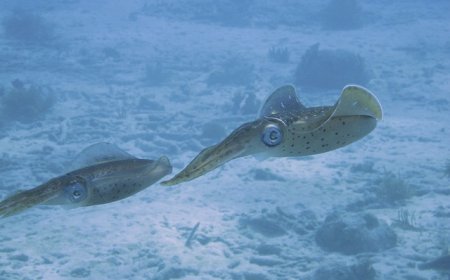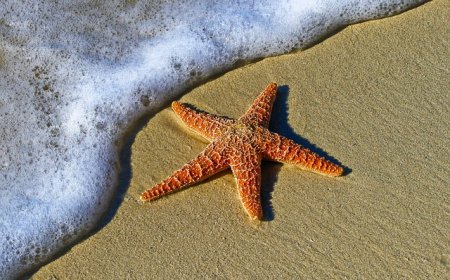All About Crabs: Clawed Crustaceans of the Shore and Sea
Discover the amazing world of crabs in this full educational article for students aged 8–16. Learn about their claws, shells, behavior, and role in marine ecosystems. Includes quiz, vocabulary, and kid-friendly summary.
🦀 Crabs: Clawed Crustaceans of the Shore and Sea
Crabs are some of the most recognizable animals in the ocean, known for their sideways walk, clawed pincers, and tough shells. There are over 6,800 species of crabs found in oceans, rivers, mangroves, and even on land!
Crabs come in all sizes, from the tiny pea crab (smaller than a fingernail) to the massive Japanese spider crab (with legs up to 12 feet across!). They’re important to marine ecosystems as predators, scavengers, and prey—and they’re fascinating creatures to study.
🌍 Where Crabs Live
Crabs are found in almost every aquatic habitat:
- Oceans and seas (from shallow tide pools to the deep sea)
- Estuaries and mangrove swamps
- Freshwater rivers and lakes
- On land (like the coconut crab)
Most crabs live near the shoreline, where they dig burrows, hide under rocks, and feed on what the tides bring in. They are great at camouflage, blending into sand, mud, or coral.
🦞 Body Structure and Adaptations
Crabs are crustaceans with hard exoskeletons and jointed legs. Their key body parts include:
- A carapace (hard shell) that covers the head and body
- Two claws (chelae) used for defense, feeding, and communication
- Eight walking legs
- Eyes on stalks for a wide field of vision
- A small, tucked-under abdomen
Some crabs have one claw larger than the other (like the fiddler crab), and others have flattened bodies to hide in small spaces. Crabs walk sideways because of the way their legs are attached!
🍽️ What Crabs Eat
Crabs are omnivores. They eat:
- Algae and seaweed
- Small fish and animals
- Dead plants and animals (detritus)
- Mollusks like clams and snails
They use their claws to grab, cut, and crush food. Crabs are important scavengers, helping clean the ocean by eating leftovers. Some species, like the filter-feeding porcelain crab, use feather-like mouthparts to catch plankton.
💪 Defense and Behavior
Crabs have many ways to protect themselves:
- Hard shells to guard against predators
- Camouflage to hide from sight
- Powerful claws to fight or scare off enemies
- Burrowing to hide in sand or mud
They also use their claws for communication. Male fiddler crabs wave their big claw to attract mates or warn rivals. If a crab loses a claw or leg, it can regrow it during molting!
🔁 Molting and Growth
Crabs grow by molting—shedding their old shell and forming a new, larger one. The process is:
- The crab builds a new soft shell underneath
- Splits and sheds the old shell
- Hides while the new shell hardens
This is dangerous since crabs are soft and vulnerable for days, so they usually stay hidden. Young crabs molt more often than adults, sometimes dozens of times before reaching full size.
🐣 Life Cycle and Reproduction
Most crabs reproduce by:
- Males attracting females with claw waves or fights
- Females releasing fertilized eggs from their abdomen
Eggs hatch into tiny swimming larvae that drift before settling on the ocean floor. Some species, like the blue crab, lay millions of eggs at once!
⚠️ Threats and Conservation
Many crab species face risks from:
- Overfishing of edible species like blue crabs
- Habitat destruction (loss of mangroves and seagrass beds)
- Pollution, including oil spills and plastics
- Climate change, affecting temperature and oxygen levels
Conservation efforts include:
- Fishing limits and size regulations
- Marine protected areas
- Habitat restoration (e.g., planting mangroves)
- Education about responsible harvesting
Protecting key crab species helps the entire ecosystem thrive.
🎉 Fun Facts About Crabs
- Crabs can walk sideways, forward, and backward!
- The Japanese spider crab is the largest crab in the world.
- Some crabs carry sea anemones or sponges on their shells for defense.
- Coconut crabs can climb trees and crack coconuts.
- Crabs use bubbles and vibrations to communicate.
🧠 Vocabulary List
- Crustacean – A group of animals with hard shells and jointed legs.
- Carapace – The hard upper shell of a crab.
- Chelae – A crab’s claws or pincers.
- Molting – Shedding an old shell to grow a new one.
- Camouflage – Blending in with the environment.
- Omnivore – An animal that eats both plants and animals.
- Larva – A young form that looks different from the adult.
- Detritus – Dead organic material used as food.
- Burrowing – Digging and hiding under sand or mud.
- Ecosystem – A community of living and nonliving things.
✅ Crab Quiz: Pinch Into This Challenge!
1. How many legs do crabs have?
A. 6
B. 8 walking legs + 2 claws
C. 4
D. 10 arms
✅ Answer: B. 8 walking legs + 2 claws
2. Why do crabs molt?
A. To clean their shell
B. To swim faster
C. To grow by shedding their old shell
D. To change color
✅ Answer: C. To grow by shedding their old shell
3. What do crabs use their claws for?
A. Jumping
B. Defense, feeding, and communication
C. Flying
D. Digging holes only
✅ Answer: B. Defense, feeding, and communication
4. What kind of eaters are crabs?
A. Carnivores only
B. Herbivores
C. Omnivores
D. Filter feeders only
✅ Answer: C. Omnivores
5. What is a baby crab called right after it hatches?
A. Clawling
B. Hatchling
C. Larva
D. Shellling
✅ Answer: C. Larva
🧒 Kid-Friendly Summary
Crabs are cool crustaceans with tough shells and strong claws. They walk sideways, dig burrows, and help clean up the ocean floor. Crabs molt to grow, eat almost anything, and play an important role in the ocean food web.
Some are tiny, some are huge, and all are fun to watch. Let’s protect their homes so crabs can keep pinching, scuttling, and cleaning up the sea!



















































